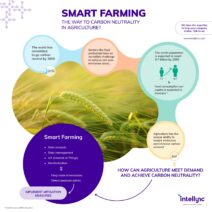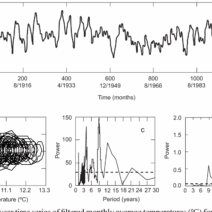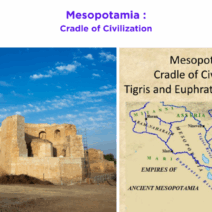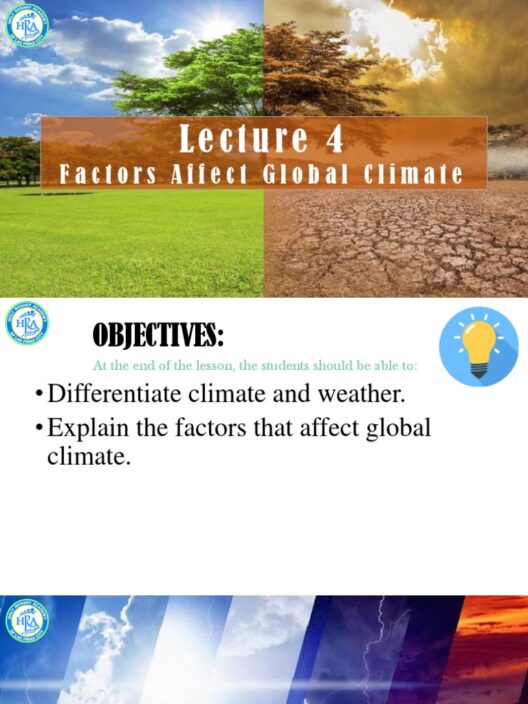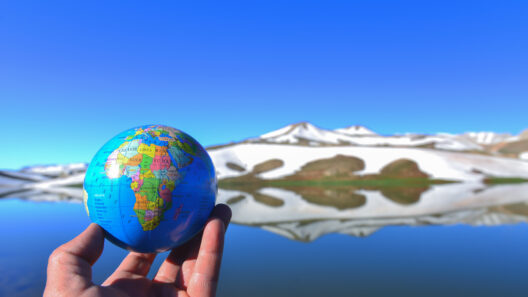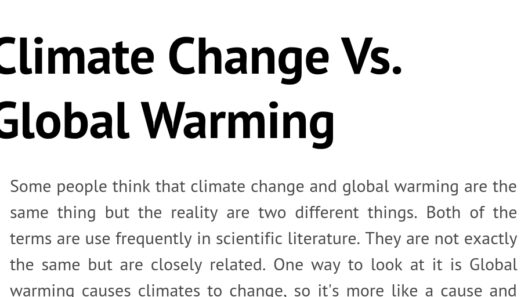The phenomenon of the polar vortex is akin to a sprawling tapestry, intricately woven with threads of atmospheric dynamics, temperature differentials, and climatic anomalies. What emerges from this complex fabric is both a puzzling riddle and a clarion call—an unmistakable sign of how global warming is reshaping our winters. In recent years, the polar vortex has transformed from a meteorological term into a widespread expression of climatic oddities. Manifesting as erratic cold fronts and unusual warmth, this phenomenon demonstrates that climate change is not merely a distant threat; it is a tangible reality influencing weather patterns across the globe.
The polar vortex, a vast, swirling mass of frigid air encircling the Arctic, typically remains stable during the winter months. However, warming temperatures in the Arctic region compromise this stability, leading to a perturbation in its normal behavior. When the polar vortex weakens, it allows cold Arctic air to plunge southward into the mid-latitudes, resulting in severe winter weather in regions previously accustomed to milder conditions. This tug-of-war between the Arctic and temperate regions highlights the paradox of climate change: while the planet warms overall, local temperatures can plummet unpredictably.
Recent winters have revealed an unsettling trend—extreme cold snaps ravaging parts of the United States and Europe juxtaposed against unseasonably warm periods in other areas. These fluctuations can be attributed to changes in the polar vortex, a phenomenon that has garnered both scientific inquiry and public attention. When the polar vortex becomes unstable, it is not merely a fateful twist of nature; it is an unfolding narrative of the Earth’s climatic evolution, an illustration of the chaotic impacts of anthropogenic climate change.
Intriguingly, as global temperatures rise, the Arctic is warming at a rate approximately twice as fast as the rest of the planet. This exacerbation alters atmospheric pressure, prompting ripples that affect the polar vortex. The warming pushes the polar vortex to oscillate wildly, leading to events like the “Siberian Express,” where brutally cold air plunges into mid-latitudes of North America. This phenomenon serves as a stark reminder of interconnected systems—what occurs in the Arctic does indeed echo in our backyards.
It is essential to appreciate that the impacts of the polar vortex are not universally negative. The displacement of the polar vortex also enables moderate winters in some regions, promoting the perplexing idea of ‘winter warmth.’ As such, the interplay of heat and cold becomes emblematic of the shifting climate narrative, one where traditional seasonal expectations no longer hold true. Furthermore, variations in precipitation patterns, ranging from debilitating snowstorms to balmy days, challenge our longstanding perceptions and adaptive mechanisms.
One may ask, how can such a seemingly localized atmospheric cycle have worldwide ramifications? The answer lies in the interconnectivity of our climate system. The alterations in the polar vortex can disrupt the jet stream, a high-altitude river of air that guides weather patterns across the continents. This disruption leads to a cascade of effects: droughts in some regions and floods in others, extending the influence of the polar vortex far beyond the Arctic circle. As we witness these jarring inconsistencies, the realization becomes inevitable: climate change is no longer a slow-moving ship but a tempest we must navigate with urgency.
The implications of this phenomenon are far-reaching. Agricultural practices face the threat of unpredictability; crops once sown during early springs may face late frosts or unanticipated heatwaves. Moreover, energy infrastructure is put to the test as unusually cold temperatures elevate demand and stress the electrical grid. This cyclic barrage of climatic extremes calls for enhanced preparedness and adaptive strategies within our communities to mitigate economic losses and safeguard public health.
As scientists delve deeper into meteorological research, the need for urgency in tackling climate change becomes clearer. The polar vortex serves as a microcosm of a larger narrative—one that highlights the necessity for global cooperation to combat the incipient crisis. Investment in renewable energy, sustainable agricultural practices, and community resilience initiatives are paramount to counterbalancing the whims of the climate. In doing so, we not only respond to the immediate challenges posed by erratic winters but also mitigate potential disasters to come.
While the polar vortex may be a perplexing enigma, it provides an opportunity for action, igniting a discourse on the importance of climate awareness and responsibility. As we seek to unravel this climatic puzzle, we must recognize our role as stewards of the Earth, charged with safeguarding not just our winters, but the very fabric of our environment. Through informed choices and collective efforts, we can begin to stitch a new narrative, a tale of balance and resilience that harmonizes with the natural world.
Ultimately, the polar vortex is a testament to the intricate connections that define our climate system. Each cold snap and heat wave is a gentle nudge, urging us to pay heed to the ever-evolving landscape before us. Let us embrace the challenge, to decipher and understand this climatic phenomenon while nurturing a commitment to reversing the destructive trajectory fostered by climate change. With awareness comes the potential for transformation, and as winter weaves its intricate patterns, may we emerge as vigilant guardians of our planet’s future, meeting each unpredictable season with resolve and foresight.
